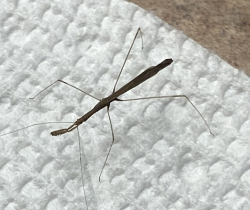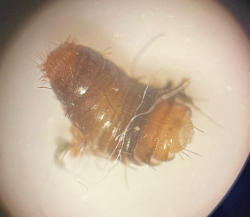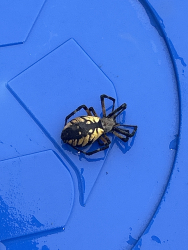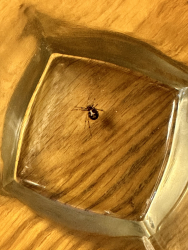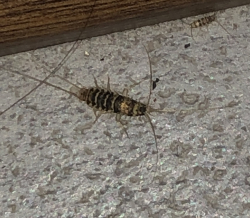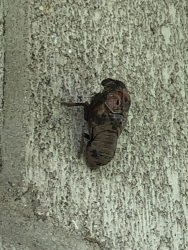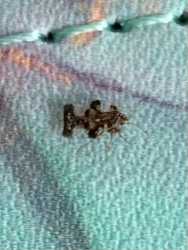Thread-legged bug
7475. Found late at night in the kitchen walking (slowly) on the kitchen counter. Aproximately the size of an American dime. Pelham, Alabama. United States
Number 7475. This is thread-legged bug (Hemiptera/Heteroptera: Reduviidae; subfamily Emesinae). Most are general predators on other small arthropods; some specialize on spiders, and may steal the spiders’ prey as well. Very interesting insects that many people never see.

